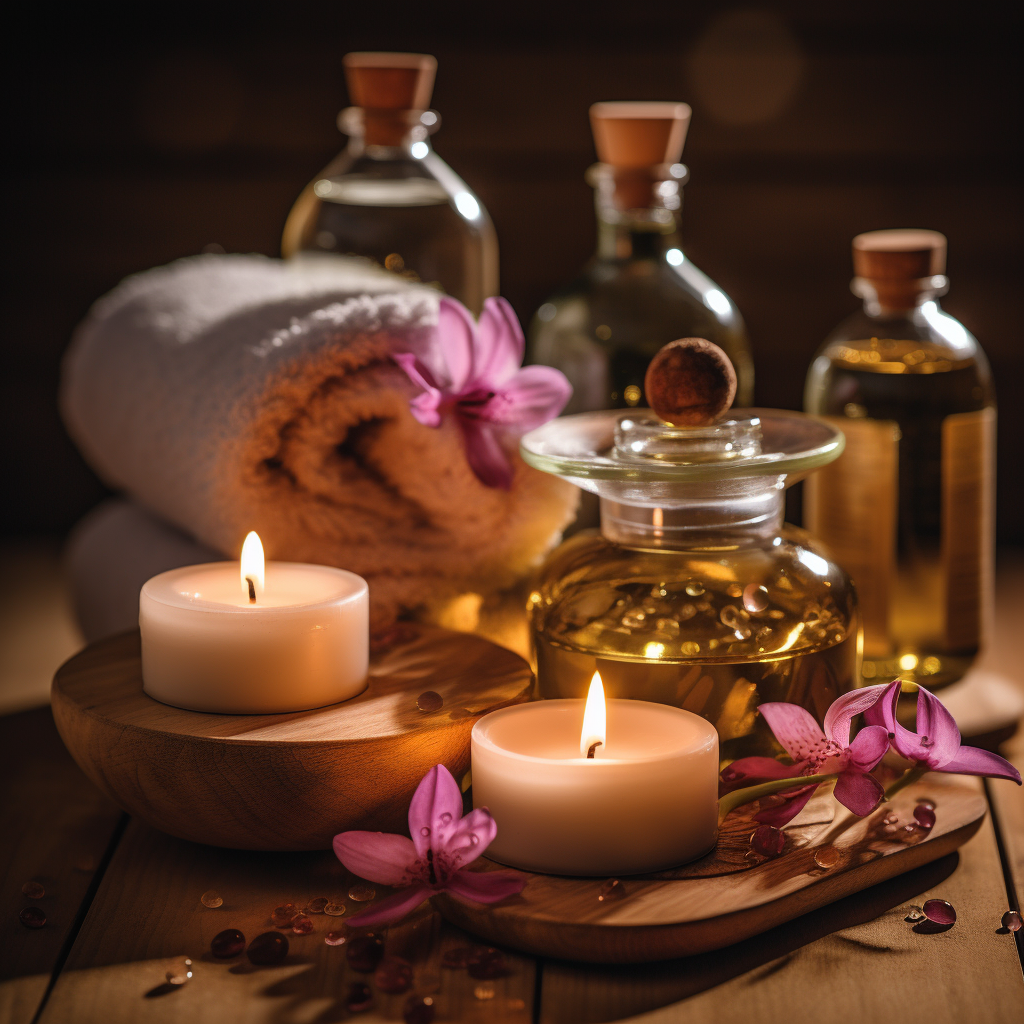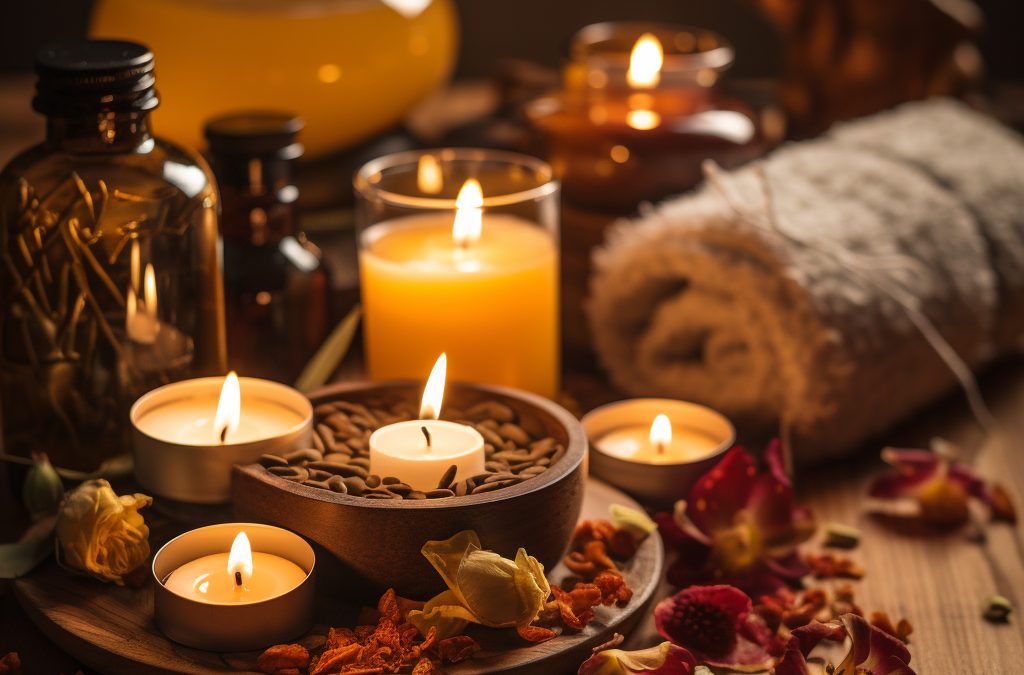
by Elizabeth Redd | Mar 8, 2024 | Holistic Living, Mental Health, Mindfulness
Embarking on a journey towards mindfulness can often be more enriching and sustainable when shared with others. Local mindfulness groups offer invaluable opportunities to connect with like-minded individuals who are also seeking to enhance their mental well-being through the practice of mindfulness. These groups provide a structured environment where participants can learn from experienced practitioners, share experiences, and support each other’s growth.
Engaging with a mindfulness community can have profound benefits, such as reduced stress levels, improved emotional regulation, and a deeper sense of connection to others. Additionally, regular attendance at group sessions can foster a sense of accountability, encouraging consistent practice which is crucial for reaping the long-term benefits of mindfulness. Participants may find that they gain new insights into their behavior and thought patterns, leading to personal growth and enhanced self-awareness.
Moreover, these gatherings often introduce a variety of mindfulness techniques, allowing individuals to explore different practices and find what resonates best with them. From meditation to mindful walking, the diversity of activities offers a rich tapestry of experiences that can fortify one’s personal mindfulness practice.
Ready to kickstart your wellness journey? Sign up for our content to receive exclusive tips and updates. Take the first step towards a healthier, happier you! Join Our Community Today.!
How Mindfulness Groups Can Enhance Your Life

Participation in mindfulness groups can be a transformative experience, greatly enhancing various aspects of one’s life. Through consistent practice within a group setting, individuals often report improved mental clarity and focus, which can lead to greater productivity and effectiveness in both personal and professional realms. The collective energy of a group can also amplify individual motivation and commitment to the practice, resulting in more profound and lasting changes.
One of the key advantages of engaging in mindfulness with a group is the cultivation of emotional resilience. The shared experiences and discussions help members develop coping strategies for life’s challenges, fostering a robust emotional toolkit. This communal learning environment can be particularly beneficial for those struggling with anxiety, depression, or stress, as it creates a supportive space for healing and growth.
Furthermore, mindfulness groups can be a source of social support, helping to combat loneliness and social isolation by building a sense of community and belonging. The connections made in these groups often extend beyond the sessions themselves, leading to meaningful friendships and a network of support that can be accessed in times of need.
The practice of mindfulness within a group can also enhance spiritual well-being for those who seek it. Many find that it deepens their connection to the present moment and cultivates a greater appreciation for life’s simple pleasures, leading to an overall increase in life satisfaction and joy.
Finding the Right Mindfulness Group for You

Discovering the right mindfulness group near me is an essential step in your journey toward enhanced well-being. It’s important to find a group that aligns with your personal goals and preferences. Start by assessing what you hope to gain from the experience—whether it’s stress reduction, spiritual growth, or simply a sense of community. With your objectives in mind, research local offerings to find a fit that resonates with you.
Consider the group’s philosophy and approach to mindfulness. Some groups may emphasize meditation and deep-breathing exercises, while others may incorporate movement, such as yoga or walking meditations. Additionally, inquire about the experience and credentials of the facilitator, as their expertise can significantly impact your experience.
Location and schedule are practical considerations. Look for groups that are conveniently located and meet at times that easily integrate into your routine. This will help ensure consistent attendance, which is key to reaping the full benefits of group mindfulness practice.
Don’t hesitate to try out several groups before making a commitment. Many groups offer trial sessions or open houses, providing an opportunity to experience the group dynamics firsthand. Trust your intuition; the right group should leave you feeling welcomed, comfortable, and excited about your mindfulness journey.
If you’re unable to find suitable local groups, consider online options. The digital space offers a plethora of virtual mindfulness communities that can offer flexibility and a broad range of approaches to suit your needs.
Connect with Your Community Through Mindfulness
Engaging with a community through mindfulness creates a shared space for growth and connection. As you embark on this journey, you’ll not only enhance your own mental clarity and peace but also forge meaningful relationships with others on similar paths. These connections can provide mutual support, motivation, and a sense of belonging, which are invaluable when navigating life’s challenges.
Being part of a mindfulness group allows you to learn from diverse perspectives and experiences. It’s a chance to discuss insights and obstacles, celebrate progress, and offer compassion and empathy to fellow members. In turn, the group’s collective energy can amplify your individual practice, making the experience more profound than solitary meditation.
Community mindfulness activities might include group meditations, discussions on mindfulness topics, book clubs focusing on related literature, or even community service projects that embody the mindfulness principles of awareness and compassion. These activities not only enrich your practice but also contribute to the well-being of the wider community.
Moreover, engaging in local mindfulness events, like workshops or retreats, can deepen your understanding of mindfulness and provide new techniques to incorporate into your daily routine. These shared experiences can become milestones in your journey, marking both personal growth and the strengthening of community ties.
Remember, the impact of mindfulness extends beyond the individual. As members of a mindfulness group support one another, they collectively contribute to a more mindful, compassionate, and resilient society. So, by connecting with your community through mindfulness, you’re not just bettering yourself; you’re also playing a part in a larger movement towards a more conscious and caring world.
Embracing the Mindful Movement Locally

Embracing the mindful movement locally is a powerful way to integrate mindfulness into your daily life. By seeking out “mindfulness groups near me,” you are taking a proactive step to engage with practices that foster a more intentional and centered way of living. Local groups offer a unique opportunity to practice mindfulness in a familiar context, allowing you to form connections with your surroundings and the people within it.
In these groups, you’ll often find a range of activities tailored to the community’s needs and interests. From outdoor walking meditations in local parks to quiet sitting sessions in neighborhood centers, these activities are designed to be accessible and resonate with the local culture and environment.
Participating in local mindfulness initiatives also means you’re contributing to a movement that’s about more than just individual well-being. It’s about creating a ripple effect of positivity and awareness across your community. Local businesses, schools, and organizations may begin to incorporate mindfulness principles into their operations, fostering environments where compassion, focus, and balance are valued.
Moreover, local leaders and advocates of the mindfulness movement often host events such as talks, fairs, and seminars that drive the conversation about the importance of mental health and well-being in the community. Engaging in these discussions not only enhances your knowledge but also empowers you to become an advocate for mindfulness in your own networks.
By embracing the mindful movement locally, you’re not only nurturing your personal growth but also helping to build a community that supports the mental and emotional health of its members. As the movement grows, so does the collective consciousness, leading to a more mindful, peaceful, and connected society.
Maximize Your Mindfulness Journey with Local Groups

Ready to kickstart your wellness journey? Signing up for mindfulness groups in your area can significantly enhance your journey towards inner peace and mental clarity. When you search for “mindfulness groups near me,” you’re not just looking for a place to meditate; you’re seeking a sanctuary where you can grow, learn, and share the experience with others who are on a similar path.
Local groups provide a structured approach to mindfulness that can be particularly beneficial for beginners. They often offer a schedule of regular meetings which can help to establish and maintain a consistent practice. Moreover, the guidance of experienced facilitators can help you to deepen your understanding of mindfulness techniques and how to apply them effectively in everyday life.
For those already familiar with mindfulness practices, local groups can offer fresh perspectives and the opportunity to explore new methods. It’s also an excellent way to remain accountable and motivated. The shared experiences and personal stories that emerge from group sessions can be incredibly inspiring and a powerful source of motivation.
By joining a local mindfulness group, you also gain access to a supportive network of peers. This sense of community is invaluable, as members encourage one another and provide a sense of belonging. The connections made within these groups often extend beyond the sessions themselves, leading to new friendships and support systems.
To maximize your mindfulness journey, consider the profound impact of integrating community-based practices into your routine. The synergistic effect of a group can propel you toward greater mental and emotional well-being. Join Our Community Today! and take the first step towards a healthier, happier you! Sign up for our content to receive exclusive tips and updates.

by Elizabeth Redd | Feb 28, 2024 | Health, Mental Health, Mindfulness
Welcome to the journey of self-discovery and serenity through Mindfulness-Based Stress Reduction (MBSR). This transformative practice, originally developed by Dr. Jon Kabat-Zinn, harnesses the power of mindfulness meditation to promote wellness and manage stress. At its core, MBSR teaches individuals how to do mindfulness based stress reduction by fostering a heightened awareness of the present moment.
Engaging in MBSR involves a series of structured exercises including meditation, yoga, and body awareness techniques. These practices are designed to help participants recognize and break free from habitual, often unconscious emotional and physiological reactions to everyday stress. The ultimate goal? To cultivate a balanced and responsive mindset, rather than one that reacts impulsively and stressfully to life’s challenges.
Research has shown that MBSR can significantly reduce symptoms of stress, anxiety, and depression. By committing to a regular practice, participants can learn to respond to stressful situations with grace and clarity. If you’re looking to enhance your mental and emotional well-being, mindfulness could be the key to unlocking a more peaceful and centered version of yourself.
Ready to kickstart your wellness journey? Sign up for our content to receive exclusive tips and updates. Take the first step towards a healthier, happier you! Join Our Community Today.!
The Science Behind Mindfulness and Stress Relief

The efficacy of mindfulness in reducing stress is not just a matter of personal testimony; it is grounded in a growing body of scientific evidence. When exploring how to do mindfulness based stress reduction, it is crucial to understand the underlying mechanisms that facilitate its impact on our mental health.
Neuroscientific research has revealed that mindfulness practice can lead to changes in brain regions associated with attention, emotional regulation, and self-awareness. One key area is the prefrontal cortex, responsible for executive functions like planning and impulse control, which becomes more active during mindfulness exercises. Conversely, the amygdala, often referred to as the brain’s “stress center,” shows reduced activity, which correlates with a decrease in stress responses.
Furthermore, mindfulness has been linked to lower levels of the stress hormone cortisol, suggesting a physiological basis for the feelings of relaxation and calm that many practitioners report. Additionally, mindfulness can improve the quality of sleep, which is often disrupted by stress, leading to a more restorative rest and better overall health.
These scientific insights are vital as they not only validate the benefits of mindfulness but also help tailor more effective stress reduction programs. By understanding the science, individuals can approach mindfulness with confidence, knowing that their efforts are supported by robust research.
Essential Techniques of Mindfulness Meditation
Mindfulness meditation is a practice that cultivates a nonjudgmental awareness of the present moment, often leading to enhanced psychological well-being. To harness the benefits of mindfulness, several key techniques can be employed, each serving as a foundational pillar in the journey to stress reduction.
- Body Scan: This technique involves mentally scanning your body from head to toe, observing any sensations, tension, or discomfort without trying to change them. The body scan promotes a state of focused relaxation and can help in releasing physical stress.
- Breath Awareness: Paying attention to the breath is a central practice in mindfulness. It involves observing the natural inhalation and exhalation without altering the breathing pattern. Breath awareness helps anchor the mind in the present and can serve as a refuge from stress-inducing thoughts.
- Mindful Observation: This involves selecting an object or a sensation and focusing your attention on it completely. It could be the flame of a candle, the sound of birds, or even the taste of food. By fully engaging with the present experience, mindful observation can interrupt the flow of worries and stressors.
- Loving-kindness Meditation: Also known as Metta meditation, this practice focuses on cultivating feelings of love and kindness towards oneself and others. It can counteract feelings of anger or resentment, which are often stress-related emotions.
These techniques are not just exercises but are insights into a way of being. By regularly practicing them, individuals can create a powerful toolkit for managing stress and enhancing overall well-being. As one becomes more adept at these practices, their capacity to remain centered and peaceful in the face of life’s challenges typically grows, reflecting the profound impact of mindfulness meditation.
Integrating Mindfulness into Your Daily Routine

Integrating mindfulness into your daily routine can transform ordinary moments into opportunities for stress reduction and self-awareness. Establishing a regular practice is key to reaping the long-term benefits of mindfulness. Here are several strategies to weave mindfulness into the fabric of your day:
- Start Your Day Mindfully: Begin with a few minutes of meditation or mindful breathing each morning. This sets a calm, present-centered tone for the day ahead.
- Mindful Eating: Take the time to savor your meals without distractions. Pay attention to the taste, texture, and aroma of your food, which can enhance the dining experience and improve digestion.
- Workplace Mindfulness: Take short mindfulness breaks during work to refocus and recharge. Even a few moments of deep breathing or stretching can mitigate stress and increase productivity.
- Mindful Movement: Incorporate activities such as yoga or walking into your routine, focusing on the sensations in your body as you move. This practice promotes physical health and mental clarity.
- Evening Reflection: End your day with a mindfulness exercise, such as journaling or a body scan, to process the day’s events and settle your mind before sleep.
Remember, mindfulness is not about adding another “to-do” on your list; it’s about engaging fully with whatever you are doing at the moment. Whether you’re brushing your teeth, taking a shower, or waiting in line, each activity offers a chance to practice mindfulness. By doing so, you’ll likely find that you approach life’s stresses with a greater sense of calm and resilience.
Overcoming Challenges in Mindfulness Practice

Embarking on a mindfulness practice is a powerful step toward stress reduction, but it’s not without its challenges. It’s common to encounter obstacles along the way, and understanding how to navigate these can make all the difference in maintaining a consistent practice. Here’s how to address some common difficulties:
- Dealing with Distractions: Our minds naturally wander, and it’s easy to become frustrated with internal chatter during mindfulness sessions. When distractions arise, gently acknowledge them and return your focus to your breath or the present moment without judgment.
- Managing Expectations: Some may expect immediate results from mindfulness practice. It’s important to understand that benefits often accrue over time. Patience and persistence are key.
- Finding Time: Many people struggle to find time for mindfulness in their busy schedules. However, mindfulness can be practiced in short bursts throughout the day, such as during a 5-minute work break or while waiting in line.
- Physical Discomfort: For those new to meditation, sitting still for extended periods can be challenging. It’s permissible to adjust your position, stretch, or even practice mindfulness while walking or standing.
- Self-Criticism: It’s not uncommon to criticize oneself for “doing it wrong.” Remember that mindfulness is a practice, and there is no perfect way to do it. The key is consistency and self-compassion.
Ultimately, overcoming challenges in mindfulness practice is about adapting the practice to fit your life and forgiving yourself for the inevitable hiccups along the way. As you become more adept at recognizing and working through these challenges, your mindfulness practice will deepen, and so too will the benefits you derive from it.
Harnessing Mindfulness for Long-Term Stress Management

Mindfulness is not just a short-term solution; when practiced regularly, it can become a vital part of long-term stress management. To harness its full power, incorporate mindfulness into your daily routine. It can be as simple as starting your day with a few minutes of deep breathing or taking mindful moments to savor your meals. Over time, these practices can rewire the brain to respond more calmly to stress and improve overall resilience.
Consistency is crucial for long-term success. Whether you choose to meditate, practice yoga, or engage in mindful walking, the goal is to make these activities a non-negotiable part of your life, just like eating or sleeping. Remember that mindfulness is a skill that improves with practice, and over time, it can significantly diminish the impact of stress on your mind and body.
As you explore different mindfulness techniques, you may wish to connect with others on the same journey. Join Our Community Today to gain access to a wealth of resources and support that can help you stay committed to your practice. With the shared experiences and encouragement of a community, you will find it easier to integrate mindfulness into your life for lasting stress reduction and enhanced well-being.
Ready to kickstart your wellness journey? Sign up for our content to receive exclusive tips and updates. Take the first step towards a healthier, happier you!

by Elizabeth Redd | Feb 24, 2024 | Health, Holistic Living, Mindfulness
Welcome to the serene world of health and wellness spa retreats, a sanctuary where tranquility meets rejuvenation. These havens of peace offer a respite from the hustle and bustle of daily life, providing an opportunity to realign your body, mind, and spirit. Immerse yourself in an environment where every detail is curated to promote relaxation and foster a sense of holistic well-being.
From therapeutic massages that soothe aching muscles to mindfulness meditation sessions that clear the mind, these retreats are designed to cater to your every need. With a focus on personalized care, nutrition, and wellness education, you’re not just indulging in momentary pleasures; you’re embarking on a journey towards long-lasting health and happiness. Whether you’re seeking to detox, manage stress, or simply unwind, finding a health and wellness spa near me can be the first step towards achieving your wellness goals.
Ready to kickstart your wellness journey? Sign up for our content to receive exclusive tips and updates. Take the first step towards a healthier, happier you! Join Our Community Today.!
The Healing Power of Spa Therapies
The cornerstone of any health and wellness spa is the array of therapeutic treatments designed to heal and rejuvenate. Spa therapies are more than just luxurious indulgences; they harness the healing power of touch and natural remedies to offer significant health benefits. Modalities such as deep tissue massages, reflexology, and aromatherapy work synergistically to relieve tension, improve circulation, and reduce stress levels, leading to enhanced overall well-being.
At the heart of these treatments is the belief in the body’s intrinsic ability to heal itself. By stimulating pressure points, releasing muscle knots, and utilizing essential oils, spa therapies can help to reset the body’s natural balance. The benefits are far-reaching, from improved sleep quality and boosted immunity to a more positive mental state and increased energy levels. Furthermore, many spas incorporate hydrotherapy, which uses water’s therapeutic properties to stimulate blood flow and soothe the nervous system.
For those on a quest for holistic health, the integration of spa therapies into regular self-care practices can be transformative. It’s a journey that transcends the physical, touching on the emotional and spiritual realms, and leading to a more vibrant, joyful existence.
Finding Your Perfect Spa Sanctuary Nearby

Finding a health and wellness spa near me that aligns with your specific needs for relaxation and rejuvenation can be a serene adventure in itself. The quest for your perfect spa sanctuary should start with identifying what type of experience you are seeking. Are you looking for a tranquil escape focused on mindfulness and meditation? Or perhaps a more active retreat that includes yoga and fitness classes? Many spas also offer specialized treatments, such as Ayurvedic therapies, hot stone massages, or seaweed wraps, each with unique benefits.
Once you have clarity on the type of retreat you desire, researching local options becomes much easier. Utilize online directories, read through reviews, and don’t hesitate to ask for recommendations on social media. Look for spas that have a strong commitment to quality, employ certified professionals, and use high-grade products. Accessibility is also key; consider the location and ease of travel to ensure that your spa time is as stress-free as possible.
It’s essential to explore the amenities offered by the spa as well. A well-rounded health and wellness spa might feature saunas, steam rooms, therapeutic pools, and relaxation lounges. These facilities complement the treatments and help to create a holistic healing environment. By taking the time to find a spa that offers the right balance of therapies, ambiance, and amenities, you can ensure that your spa experience is nothing short of transformative.
Indulge in Signature Spa Experiences

Indulging in signature spa experiences can transport you to a world of utter tranquility and relaxation. These unique experiences are crafted to offer a distinctive take on traditional spa treatments, incorporating elements that are often exclusive to the spa’s location or philosophy. For example, you might find a treatment that utilizes locally sourced herbs and minerals, or a massage that integrates a region’s traditional healing techniques.
When selecting a health and wellness spa near me, consider the signature experiences that set them apart. Many high-end spas have developed proprietary therapies that blend ancient wisdom with modern science, resulting in innovative treatments that can’t be found elsewhere. These might include a custom aromatherapy session where essential oils are selected based on your emotional and physical needs, or a bio-energy detox that uses cutting-edge technology to rejuvenate your body at a cellular level.
Furthermore, these signature experiences often involve a multi-sensory approach, engaging not just the sense of touch, but also sight, sound, and smell to create a deeply immersive experience. Soothing music, aromatic scents, and visually calming environments all play a role in enhancing the overall spa journey. By choosing to indulge in these signature spa experiences, you are not only treating yourself to exceptional pampering but also embracing the opportunity for profound personal wellness transformation.
Integrating Wellness into Your Lifestyle

Integrating wellness into your lifestyle is about creating sustainable habits that enhance your overall health and happiness. It goes beyond the occasional spa visit, encompassing daily practices that support your physical, mental, and emotional well-being. Start by identifying areas in your life where you can make healthful adjustments, such as incorporating more whole foods into your diet, establishing a regular exercise routine, or dedicating time to mindfulness and meditation.
Regular physical activity is a cornerstone of a wellness-focused lifestyle. Aim to find forms of exercise that you enjoy, which could range from yoga and pilates to hiking or dancing. The key is consistency and enjoyment, as this will help you maintain an active lifestyle in the long run. Complement this with a balanced diet rich in nutrients, and consider preparing meals that are not only nourishing but also enjoyable to eat.
Mental and emotional health are equally important in your wellness journey. Practices like journaling, deep-breathing exercises, or engaging in hobbies that bring you joy can greatly contribute to your mental well-being. Additionally, ensure you’re getting adequate rest; quality sleep is vital for recovery and maintaining energy levels.
Remember, wellness is a personal journey, and what works for one person may not work for another. Be patient with yourself as you make these changes and listen to your body’s needs. Over time, these small steps will lead to significant transformations in your health and happiness, allowing you to thrive in all aspects of life.
Reap the Benefits of Regular Spa Visits

Regular visits to a health and wellness spa near you can be a game-changer in your quest for a balanced and rejuvenated lifestyle. These sanctuaries of serenity offer a myriad of services designed to alleviate stress, detoxify the body, and promote healing. From therapeutic massages that release muscle tension to skincare treatments that revitalize your complexion, spas provide a holistic approach to personal care. Hydrotherapy, for example, utilizes water’s natural properties to soothe aches and stimulate circulation.
Moreover, the calm and nurturing environment of a spa is the perfect setting to disconnect from the hustle and bustle of daily life. It’s an opportunity to reflect, meditate, and focus on self-care. Spas often incorporate mindfulness practices, like guided meditation or breathing workshops, helping you to cultivate mental clarity and emotional resilience.
The physiological benefits are tangible as well; spa therapies can help balance hormones, improve sleep patterns, and boost the immune system. By making regular spa visits a part of your wellness routine, you’re not just indulging in a luxury; you’re investing in your long-term health and vitality. It’s a commitment to nurturing your body and mind, allowing you to emerge refreshed and empowered to tackle life’s challenges.
Ready to kickstart your wellness journey? Sign up for our content to receive exclusive tips and updates. Take the first step towards a healthier, happier you! Join Our Community Today.

by Elizabeth Redd | Feb 20, 2024 | Health, Holistic Living, Mindfulness
Welcome to the journey of self-discovery and nurturing through the holistic definition of health and wellbeing. Health is not merely the absence of disease; it is the harmonious balance of the mind, body, and spirit. The concept of holistic health emphasizes the importance of each aspect of a person’s life and how they interconnect to affect overall wellness. It’s about paying attention to the nuances of your lifestyle, emotional balance, social interactions, and mental health, alongside physical health.
At Health and Healing, our mission is to guide you towards a lifestyle that fosters all facets of your wellbeing. Whether you’re looking to enhance your diet, integrate mindfulness practices into your routine, or cultivate a supportive social network, our community is here to support you. Ready to kickstart your wellness journey? Sign up for our content to receive exclusive tips and updates. Take the first step towards a healthier, happier you! Join Our Community Today.
As we delve deeper into the holistic definition of health and wellbeing, you will learn how to apply these principles to your everyday life, creating a balanced and fulfilling existence. Stay tuned as we explore the various dimensions of holistic health and how you can integrate them to achieve optimal wellness.
Understanding the Pillars of Holistic Health

The concept of holistic health is built upon the understanding that true wellness encompasses several core pillars that contribute to an individual’s overall quality of life. These pillars are interconnected, each playing an essential role in nurturing and sustaining a state of complete well-being. Let’s explore these key components:
- Physical Health: This pillar includes exercise, nutrition, sleep, and the management of physical ailments. It’s about nurturing the body with proper care, rest, and nutrition to function at its best.
- Emotional Health: Emotional well-being involves understanding and respecting your feelings, values, and attitudes. It means having the resources and tools to cope with life’s challenges and maintain a positive outlook.
- Social Health: Human connection and a sense of belonging are vital. Social health focuses on building and maintaining healthy, supportive relationships and engaging in social activities that bring joy and purpose.
- Mental Health: Mental health is just as important as physical health. This aspect includes stress management, mental resilience, and the pursuit of intellectual growth and creativity.
- Spiritual Health: Whether or not you adhere to a specific faith, spiritual health is about finding meaning and purpose in life, which can be achieved through meditation, mindfulness, or various forms of personal reflection.
- Environmental Health: A healthy, clean, and safe environment is crucial for well-being. This can involve both the personal spaces in which we live and work, as well as the global environment.
By understanding the pillars of holistic health, individuals can create a balanced life strategy that supports each of these areas, leading to a more fulfilled and healthy existence. Each aspect contributes to the holistic definition of health and wellbeing, reminding us that our journey to health is multi-faceted and deeply interconnected.
The Interplay of Mind, Body, and Spirit

In the realm of holistic health, the synergy between the mind, body, and spirit is paramount. This trio works in concert to create a state of equilibrium that defines our health and wellbeing. The mind influences our thoughts and emotions, which can directly impact physiological processes within the body. Stress, for instance, can trigger a cascade of hormonal changes that affect everything from our immune system to our digestive health.
Similarly, the body has a profound effect on our mental and emotional states. Regular physical activity has been shown to alleviate symptoms of depression and anxiety through the release of endorphins, the body’s natural mood elevators. Furthermore, what we choose to eat can affect brain function, influencing our concentration, mood, and even the risk of developing mental health conditions.
Lastly, the spirit often represents the deeper sense of self and the connection to something greater than oneself. Spiritual practices, be it through religion, meditation, or connecting with nature, can provide a sense of peace and grounding, influencing both emotional wellbeing and physical health. This spiritual component encourages us to look beyond the superficial layers of our lives and find deeper meaning and connection in our existence.
The concept of the interplay of mind, body, and spirit is not just a philosophical one; it’s supported by a growing body of research that recognizes the psychosomatic network that underpins our health. By nurturing each part of this triad, we can cultivate a holistic definition of health and wellbeing, ensuring that we are not merely free from illness but are thriving in every aspect of our lives.
Lifestyle Practices for Holistic Wellbeing

Adopting lifestyle practices that honor the holistic definition of health and wellbeing is essential for nurturing the mind, body, and spirit. One key practice is mindfulness, which involves being present and fully engaging with the here and now. Mindfulness can be cultivated through meditation, yoga, or simply by paying attention during everyday activities.
Nutrition also plays a critical role in holistic wellbeing. Consuming a balanced diet rich in whole foods provides the body with the nutrients it needs to function optimally. This includes a variety of fruits, vegetables, whole grains, lean proteins, and healthy fats. Additionally, staying hydrated and limiting the intake of processed foods are vital steps toward maintaining physical and mental health.
Physical activity is another pillar of a holistic lifestyle. Exercise not only strengthens the body but also improves mental health by reducing stress and anxiety. A mix of cardiovascular exercises, strength training, and flexibility workouts can help maintain a balanced fitness routine.
Sleep is an often underappreciated aspect of holistic health. Quality sleep is crucial for the body’s repair processes and for cognitive functions like memory and learning. Establishing a regular sleep schedule and creating a restful environment can significantly improve sleep quality.
Lastly, social connections and community involvement are integral to holistic wellbeing. Positive relationships and a sense of belonging can offer emotional support, reduce stress, and contribute to a sense of purpose and fulfillment in life. Engaging in social activities, volunteering, or being part of a group are ways to enhance one’s social wellbeing.
By integrating these lifestyle practices into our daily routines, we can better support the intricate balance between our mind, body, and spirit, paving the way for a life of enriched health and happiness.
Challenges and Considerations in Holistic Health
While pursuing a holistic definition of health and wellbeing offers many benefits, it also presents its own set of challenges and considerations. One of the primary obstacles individuals may encounter is overcoming ingrained habits. Changing dietary patterns, exercise routines, and stress management strategies requires consistent effort and dedication.
Access to resources is another significant challenge. Not everyone has the same level of access to organic foods, wellness centers, or green spaces for physical activity, which can impede their ability to practice holistic health principles. Additionally, there may be financial constraints that make it difficult to prioritize high-quality food and self-care practices.
Another challenge is the misinformation that can be found in the wellness industry. With a plethora of health trends and fads, discerning credible information from marketing ploys is crucial. It requires individuals to be proactive in researching and seeking evidence-based practices for their health and wellbeing.
Time management is yet another consideration, as modern life is often fast-paced and time-constrained. Finding the time to incorporate mindfulness practices, prepare nutritious meals, or engage in regular physical activity can be daunting for those with busy schedules.
In addition, there can be cultural and societal pressures that conflict with holistic health practices. For instance, a culture that values productivity and success may discourage taking the necessary time for self-care and relaxation.
Despite these challenges, understanding and acknowledging them is the first step toward addressing them. With commitment and the right strategies, individuals can navigate these obstacles and integrate holistic health practices into their lives, leading to improved wellbeing and a more balanced lifestyle.
Nurturing Holistic Health in Modern Society

Ready to kickstart your wellness journey? In modern society, nurturing holistic health requires a conscious effort to balance the various aspects of one’s life. It involves creating a supportive environment that fosters physical, mental, and spiritual growth. One effective approach is community engagement, which can provide a network of support and shared knowledge. Participating in local wellness events, joining health-focused groups, or seeking out holistic health practitioners can enhance one’s journey toward wellbeing.
Technology also plays a pivotal role in promoting holistic health. There are numerous apps and online platforms dedicated to meditation, fitness, and nutrition that can help individuals stay on track with their health goals. However, it’s essential to use technology mindfully to avoid the potential for increased stress and distraction.
Education is a powerful tool in nurturing holistic health. By understanding the interconnectedness of lifestyle factors and their impact on overall wellbeing, individuals can make informed choices. This includes learning about the benefits of whole foods, the importance of regular physical activity, and the restorative power of adequate sleep and relaxation techniques.
Moreover, policy changes and workplace wellness programs can contribute to a more holistic health-conscious society. Employers can implement initiatives that encourage work-life balance, offer health education seminars, and provide spaces for relaxation and physical activity.
Ultimately, nurturing holistic health in modern society is about creating a culture that values and prioritizes wellbeing in all its forms. It’s about making choices that align with a more balanced and fulfilling life. For those eager to embrace this way of life, the journey begins with a commitment to personal growth and learning.
Join Our Community Today! and take the first step towards a healthier, happier you! Sign up for our content to receive exclusive tips and updates.

by Elizabeth Redd | Feb 18, 2024 | Holistic Living, Mental Health, Mindfulness
Obsessive-Compulsive Disorder (OCD) is a mental health condition characterized by intrusive thoughts and repetitive behaviors. It can be a debilitating disorder, but meditation has emerged as a promising complementary treatment. The practice of mindfulness meditation, in particular, encourages individuals to focus on the present moment without judgment. This technique helps to break the cycle of obsessive thoughts by training the mind to observe and release them without getting entangled.
By cultivating awareness, those with OCD can learn to recognize the onset of compulsive thoughts and behaviors and develop strategies to manage them more effectively. Studies have demonstrated that mindfulness meditation can reduce the symptoms of OCD, improving the quality of life for many sufferers. As a form of cognitive-behavioral therapy, it reinforces the concept that thoughts are just thoughts, and they do not need to dictate actions.
Ready to kickstart your wellness journey? Join Our Community Today. and receive exclusive tips and updates. Take the first step towards a healthier, happier you!
Exploring Mindfulness Meditation for OCD Management

Mindfulness meditation is a practice that involves paying attention to the present moment with an attitude of openness, curiosity, and acceptance. For individuals with OCD, mindfulness meditation can be particularly beneficial, as it helps to create a space between one’s thoughts and actions. This form of meditation encourages the observation of thoughts, sensations, and emotions without engaging in the compulsions that typically follow.
There are several mindfulness techniques that can be effective for OCD management. One is the body scan meditation, where attention is brought to each part of the body in turn, noting sensations without judgment. Another technique is sitting meditation, which involves focusing on the breath while letting thoughts and emotions pass by like clouds in the sky. A third technique, mindful walking, combines physical activity with the practice of presence, allowing for a grounding, rhythmic experience that can be particularly calming for those with OCD.
Regular practice of mindfulness meditation can lead to changes in the brain associated with reduced anxiety and improved emotional regulation. As mindfulness increases, the grip of OCD on one’s life may lessen, providing a sense of control and peace that is both healing and empowering.
The Role of Transcendental Meditation in Controlling OCD Symptoms
Transcendental Meditation (TM) is a form of silent mantra meditation that aims to induce a state of relaxed awareness. It has shown promise in controlling OCD symptoms by allowing individuals to transcend their thought processes and reach a deep state of restful alertness. The repetitive nature of a mantra in TM can serve as a soothing alternative focus point, which can reduce the intensity of intrusive thoughts characteristic of OCD.
Practitioners of TM are taught to gently repeat a specific mantra, a sound or phrase, in a specific manner. This practice is typically done for 20 minutes twice a day while sitting comfortably with the eyes closed. The key to TM’s effectiveness for OCD lies in its ability to elicit a relaxation response, which can lower stress hormones like cortisol and adrenaline, creating a physiological state that contrasts with the hyperarousal often experienced with OCD.
Studies have suggested that TM can decrease anxiety and stress, factors that often exacerbate OCD symptoms. By consistently engaging in TM, individuals may find their OCD symptoms become less frequent and less severe, allowing for a greater sense of well-being and improved daily functioning.
Body Scan Meditation: A Soothing Technique for OCD

Body Scan Meditation is a mindfulness practice that involves paying focused attention to different parts of the body in a gradual sequence from head to toe. This technique can be particularly beneficial for those with OCD as it encourages present-moment awareness and helps to interrupt the cycle of obsessive thoughts and compulsive behaviors.
During a Body Scan Meditation, individuals are guided to notice sensations within their bodies without judgment. Starting from the top of the head and moving through each body part, the individual is encouraged to release tension and observe any discomfort, warmth, or tingling. The process fosters a grounding experience, as attention is diverted from intrusive thoughts to physical sensations.
The practice of Body Scan Meditation can be particularly soothing for individuals with OCD. It allows for a gentle confrontation with anxious feelings that may arise during the scan, offering an opportunity to practice managing discomfort without resorting to compulsive behaviors. By regularly incorporating this meditation into their routine, people with OCD may develop a greater sense of control over their responses to anxiety-provoking stimuli, thus reducing the power of OCD symptoms over time.
Yoga Meditation: Harmonizing Body and Mind to Alleviate OCD

Yoga Meditation combines the physical postures of yoga with deep breathing and meditation to provide a holistic approach to managing OCD symptoms. This integrative practice not only strengthens the body but also stabilizes the mind, creating a harmonious balance that can be particularly therapeutic for individuals with OCD.
The physical aspect of yoga involves a series of postures, or asanas, that enhance flexibility, balance, and strength. By focusing on the precise alignment in each posture and synchronizing movement with breath, individuals engage in a form of moving meditation that anchors them in the present moment. This mindfulness can help to break the cycle of obsessive thoughts by redirecting attention to the here and now.
Furthermore, the meditative aspect of yoga encourages deep relaxation and mental clarity. Techniques such as pranayama (breath control) and dyana (contemplation) are incorporated to calm the mind and reduce stress. The regular practice of yoga meditation can lead to increased self-awareness, allowing individuals with OCD to observe their thought patterns from a distance and respond to them with reasoned choice rather than compulsion.
By blending physical postures with meditation, Yoga Meditation offers a powerful tool for those seeking to alleviate the symptoms of OCD. It helps to cultivate a state of inner peace, where the body and mind are in tune, and the individual can experience a greater sense of control and well-being.
Cultivating a Meditation Practice for Long-Term OCD Relief

Establishing a consistent meditation practice is essential for achieving long-term relief from OCD symptoms. To integrate meditation into daily life, it is crucial to set aside a specific time each day for practice. This creates a routine that can enhance the sense of control over one’s mind and reduce anxiety. Starting with just a few minutes each day and gradually increasing the duration can make the process manageable and less daunting for beginners.
Additionally, creating a dedicated space for meditation can signal to the brain that it’s time to shift into a state of mindfulness. This space doesn’t have to be large or elaborate; a quiet corner with a comfortable seat will suffice. The key is consistency and the intention to cultivate a peaceful environment.
For those new to meditation, guided sessions can be incredibly helpful. Many apps and online resources offer guided meditations specifically designed for OCD management. Utilizing these resources can provide structure and support as you develop your practice.
Remember, meditation is a skill that develops over time. Patience and self-compassion are vital, as progress may be gradual. The benefits of meditation, such as reduced stress and enhanced self-awareness, compound with regular practice, leading to significant improvements in managing OCD symptoms.
Ready to kickstart your wellness journey? Sign up for our content to receive exclusive tips and updates. Take the first step towards a healthier, happier you! Join Our Community Today.

by Elizabeth Redd | Feb 17, 2024 | Health, Holistic Living, Mindfulness
Welcome to a year of rejuvenation and self-improvement. As we step into 2023, let us mark our calendars for the enriching experience that health and wellness fairs offer. These events are not just about discovering the latest in fitness trends or nutrition tips; they are a holistic celebration of well-being, where like-minded individuals come together to inspire and learn from each other.
Attending health and wellness fairs near me in 2023 can be a transformative experience. These fairs often feature a variety of activities, including interactive workshops, health screenings, and mindfulness sessions, designed to empower you to take charge of your health and happiness. You’ll have the opportunity to meet experts in various fields, from holistic health practitioners to fitness gurus, and explore a multitude of resources that can aid in your wellness journey.
Ready to kickstart your wellness journey? Sign up for our content to receive exclusive tips and updates. Take the first step towards a healthier, happier you! Join Our Community Today!
Whether you’re looking to adopt a new fitness routine, deepen your understanding of nutritional science, or find spiritual balance, these fairs are a gateway to enhanced well-being. The connections made here can often lead to lifelong friendships and a supportive community eager to share their journey towards optimal health. So, don’t let this chance slip by; explore the health and wellness fairs near you in 2023 and embrace the path to vibrant health and happiness.
Exploring the Benefits of Attending Local Health Fairs

Local health fairs have become a beacon for those seeking to enhance their wellness in a community setting. By exploring the myriad of benefits these fairs provide, individuals can find not only motivation but also the practical tools needed to implement lasting health changes. One of the primary advantages of attending is the access to a wealth of information and services in one convenient location. This can range from free or low-cost health screenings that provide immediate feedback on one’s health status to educational seminars that demystify complex health concepts.
Moreover, health fairs often serve as a catalyst for behavioral change, offering a unique environment that encourages participants to engage with health professionals and ask questions they might not otherwise have the opportunity to discuss. The informal yet informative setting fosters a sense of comfort and openness, leading to more productive conversations about personal health concerns.
Another significant benefit is the exposure to new health and wellness products and services. Exhibitors typically showcase the latest innovations, from cutting-edge fitness equipment to nutritional supplements, giving attendees the chance to explore and sample products firsthand. This hands-on experience is invaluable for those looking to make informed decisions about the tools they incorporate into their health regimen.
Lastly, but certainly not least, is the community aspect. Attending a health fair can connect you with others who share your health goals, creating a supportive network that can lead to increased accountability and sustained motivation. This social component is often the missing link for many in their wellness journey, providing both inspiration and companionship as they embark on a path to better health.
How to Find Upcoming Health and Wellness Fairs Nearby

Locating upcoming health and wellness fairs in your vicinity can be a straightforward process if you know where to look. Begin by harnessing the power of the internet; search engines are an invaluable resource. Simply typing “health and wellness fairs near me 2023” into your search bar can yield a comprehensive list of upcoming events. Additionally, social media platforms often have event pages or community groups dedicated to health and wellness where fairs and related gatherings are advertised.
Another effective strategy is to tap into local resources. Hospitals, community centers, and wellness clinics frequently sponsor or host health fairs and usually have information available on their websites or bulletin boards. Checking with these institutions can provide insights into events that may not be widely advertised online.
Don’t overlook the value of networking. Health professionals, fitness trainers, and wellness coaches often have the inside scoop on local events and can point you in the right direction. Engaging with these individuals can also lead to personal invitations and opportunities to participate in private or smaller-scale wellness events that might not be open to the general public.
Lastly, subscribing to local newspapers and wellness magazines can be beneficial. These publications often have listings of community events, including health fairs. By staying up-to-date with these sources, you ensure that you won’t miss out on any opportunities to attend nearby health and wellness fairs that could enrich your journey toward optimal health.
Health and Wellness Fairs: A Hub for Holistic Resources

Health and wellness fairs serve as a dynamic hub for holistic resources, offering a wealth of opportunities to explore various aspects of health and well-being. These events bring together a diverse array of professionals from different sectors, including nutritionists, personal trainers, mental health experts, and alternative medicine practitioners. Attendees can benefit from free health screenings, one-on-one consultations, and educational workshops that provide valuable insights into maintaining and improving their health.
One of the key attractions at these fairs is the chance to learn about the latest wellness products and services. Exhibitors often showcase innovative fitness equipment, health foods, supplements, and holistic healing therapies. Interactive demonstrations and sample offerings allow you to experience these products first-hand, helping you make informed decisions about what might work best for your personalized wellness regimen.
In addition to the physical health resources, many fairs also emphasize mental and spiritual well-being. You might find sessions on stress management, mindfulness meditation, or yoga classes designed to enhance mental clarity and emotional balance. These fairs provide a supportive environment to connect with like-minded individuals and experts who are eager to share their knowledge and assist you on your path to holistic health.
Moreover, health and wellness fairs often cater to the entire family, with activities and educational content suitable for all ages. They can be a fun and engaging way for children and adults alike to learn about nutrition, exercise, and healthy living in an interactive and festive atmosphere.
Maximizing Your Experience at Health and Wellness Events
To maximize your experience at health and wellness events, it’s important to approach the day with a plan. Begin by researching the schedule in advance to identify workshops, talks, and demonstrations that align with your interests and wellness goals. Prioritizing these activities will ensure you gain the most from the fair without feeling overwhelmed by the breadth of options available.
Networking is another key component of these events. Engage with exhibitors, speakers, and other attendees to share experiences and knowledge. Don’t hesitate to ask questions or seek advice from experts who are typically eager to discuss their specialties. These interactions can lead to new insights and potentially beneficial connections that extend beyond the day of the event.
Comfort is also crucial for a fulfilling experience. Wear appropriate attire and footwear to enjoy the activities comfortably, especially if you plan to participate in any fitness demonstrations or health screenings. Remember to stay hydrated and consider bringing a notebook or digital device to jot down important information, contacts, and insights gathered throughout the day.
Finally, keep an open mind. Health and wellness fairs are a perfect opportunity to discover new health trends, innovative products, and alternative therapies that you might not have considered before. Embrace the chance to step out of your comfort zone and try something new, as it might just be the key to unlocking a new level of wellness in your life.
Connect with Your Community at Health and Wellness Fairs

Attending a health and wellness fair is not only about personal growth but also about connecting with the wider community. These fairs offer a unique platform to meet like-minded individuals who are also on their wellness journeys. By participating in group activities, workshops, and seminars, you can foster a sense of belonging and support that is essential for long-term health and happiness.
These events often showcase local health professionals, fitness instructors, and nutrition experts, providing an invaluable opportunity to tap into the wealth of knowledge within your own neighborhood. Establishing relationships with these local specialists can lead to ongoing support and accessibility to resources that are right at your doorstep.
Moreover, community involvement can extend beyond the event itself. Many health and wellness fairs facilitate community projects, health initiatives, or group challenges that encourage continued engagement and accountability. Participating in these community efforts can not only enhance your own wellness but can also contribute to the collective health of those around you.
Ready to kickstart your wellness journey? Sign up for our content to receive exclusive tips and updates. Take the first step towards a healthier, happier you! Join Our Community Today.
























